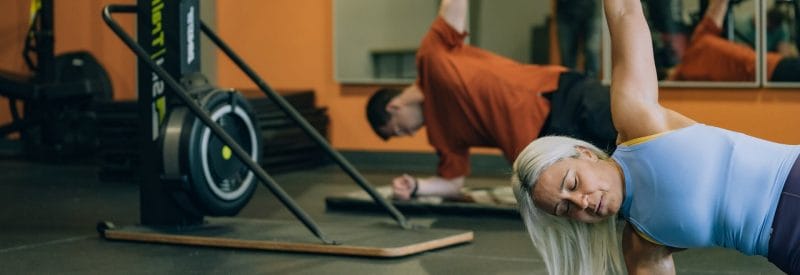Four Recommendations to Limit Sitting
Written by Dr. Michael Tancini, DPT
You’ve heard the saying before, “sitting is the new smoking.” It’s true; sitting for extended periods of time is bad for you. It forces you into compromised positions and it restricts your movement.
Compromised positions lead to compromised performance, pain and dysfunctional movement. Restricted movement leads to decreased blood circulation, decreased joint lubrication, stiff tissues and decreased energy expenditure. The combination of these two things can lead to sore joints, poor posture, increased weight gain and decreased mobility. The body is the great adapter, it’s going to adapt to the shape and stresses in which it experiences most. If you sit all day, then your body is going to adapt to that shape and the demands of that shape.
You work out one hour per day, but what are you doing for the remaining 23 hours of the day?
Count up your hours in which you are forced to sit:
• 30-60 minutes per meal of sitting down at the table = 1.5 to 3 hours
• Sit in traffic for 45 minutes going to and from work = 1.5 hours
• You work a desk job from 8-5pm; 8-9 hours spent sitting
That’s a total of 13.5 hours of sitting per day – more than half spent sitting. Add in a few more hours for the time you may spend on Facebook, Instagram, Netflix, or watching TV and that leaves you with a HEAVY majority of your day sitting.
The first step in counteracting your sedentary life is to make movement a priority. It’s hard to outwork the massive load of sitting all day with just a few exercises in the gym. The mobility and stability exercises do help, but they will only take you so far when you are not addressing the actual problem (sitting all day). You need to combat those poor positions head-on by making a lifestyle change. By maximize the times of the day where you are able to move and building in daily body maintenance, you are able to buffer the times throughout the day when you have no choice but to sit.
Four Recommendations to Limit Sitting:
1. Get up from your desk, and walk around for 10 minutes out of every hour of your workday. Treat this as an Ever-Hour-On-The-Hour workout (EHOH). Set your alarm and stick to it. The 10-minute break will make your body feel better and it will probably help you perform better in your job.
2. Ask for a stand-up desk. Many times your boss/supervisor will help you get one. If they say no, then grab a cardboard box and stack your laptop on top of it. People may look at you weird, but standing will allow your brain to think more clearly and your body to feel and function better.
3. Eat your lunch standing up, and then go for a 20-40 minute walk on your lunch break. You have been sitting all day; there is no need to sit when you don’t have to.
4. See if your co-workers are interested in having walking meetings. If you don’t need to be at a screen to discuss your ideas and topics, see if they’d be willing to take a walk while you talk. If you spend a lot of working time on your phone in conferences or meetings take a walk around the office or a lap around the block while you talk.
Maintaining your body and giving yourself access to the positions you need when you’re in the gym are both crucial for living a pain-free life. I recommend 10-15 minutes DAILY that is dedicated to body maintenance and working on the positions which give you the most problems.
Remember, the first step in counteracting your sedentary life is to make movement a priority so see how many of the above recommendations you can accomplish. The second step is to add some corrective mobility work and exercises into your routine. Check out next week’s blog post “8 Exercises to Help Combat Your Sitting Problem”.
Dr. Michael Tancini is the owner of Ground to Overhead Physical Therapy in San Diego, California, specializing in Physical Therapy, CrossFit, Sports Therapy, recovery, rehabilitation , knee pain, back Pain,hip pain, and shoulder pain.


